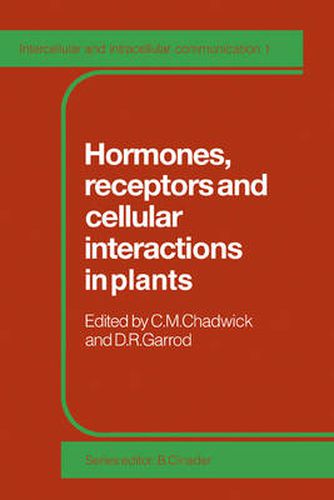Readings Newsletter
Become a Readings Member to make your shopping experience even easier.
Sign in or sign up for free!
You’re not far away from qualifying for FREE standard shipping within Australia
You’ve qualified for FREE standard shipping within Australia
The cart is loading…






The complementary binding of a ligand and receptor is the basic language of intercellular communication and this book takes a broad look at the current status of research on receptors in higher and lower plants. It starts with a discussion of some hormone receptors (auxins, ethylene and gibberellin) in higher plants, and then considers the role of cyclic AMP and its receptors in the slime mould Dictyostelium. Authoritative accounts of our present knowledge of several ‘adhesive’ phenomena are also given. These include fertilization in higher plants and yeasts, the infection of protoplasts by pathogens and of root hairs by nitrogen-fixing bacteria, cell-cell adhesion in Dictyostelium and a general consideration of the functions of lectins. First published in 1986, this book will be valuable to biochemists, cell biologists and physiologists at the research level.
$9.00 standard shipping within Australia
FREE standard shipping within Australia for orders over $100.00
Express & International shipping calculated at checkout
The complementary binding of a ligand and receptor is the basic language of intercellular communication and this book takes a broad look at the current status of research on receptors in higher and lower plants. It starts with a discussion of some hormone receptors (auxins, ethylene and gibberellin) in higher plants, and then considers the role of cyclic AMP and its receptors in the slime mould Dictyostelium. Authoritative accounts of our present knowledge of several ‘adhesive’ phenomena are also given. These include fertilization in higher plants and yeasts, the infection of protoplasts by pathogens and of root hairs by nitrogen-fixing bacteria, cell-cell adhesion in Dictyostelium and a general consideration of the functions of lectins. First published in 1986, this book will be valuable to biochemists, cell biologists and physiologists at the research level.